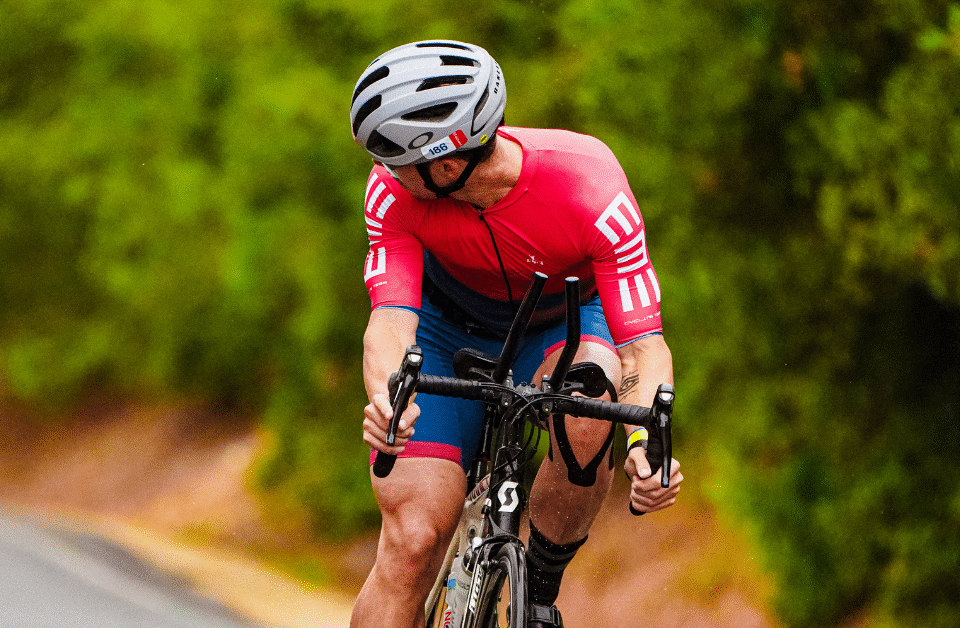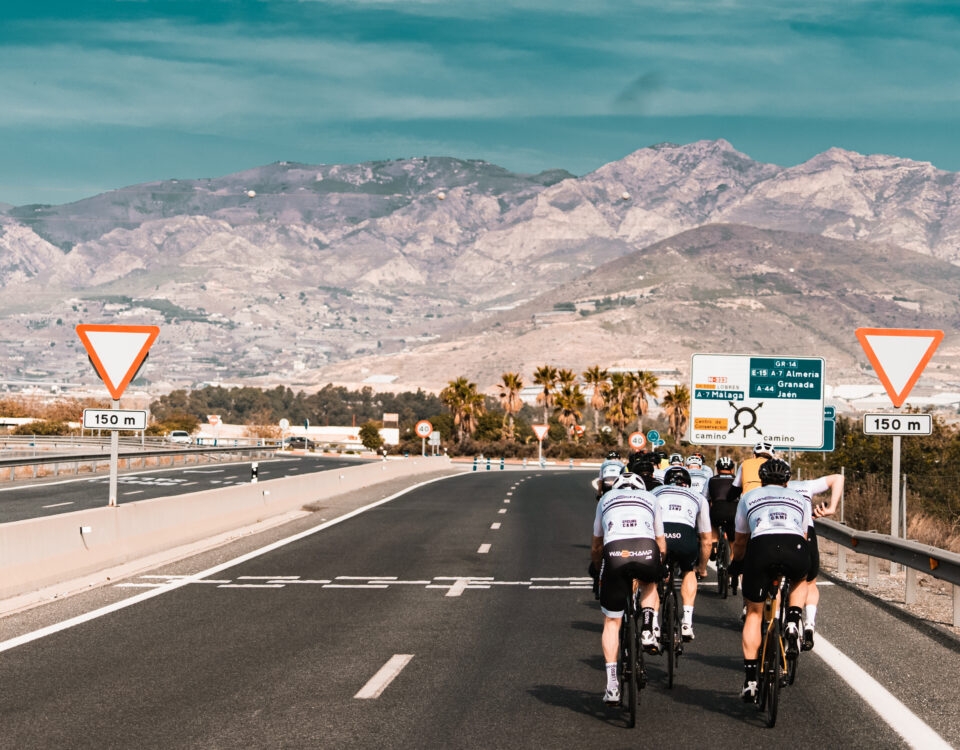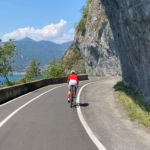
Training zones in cycling – a comprehensive guide from the world tour
16 January 2025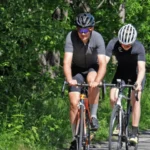
Modern cycling training based on metabolomics – a revolution in cycling
5 March 2025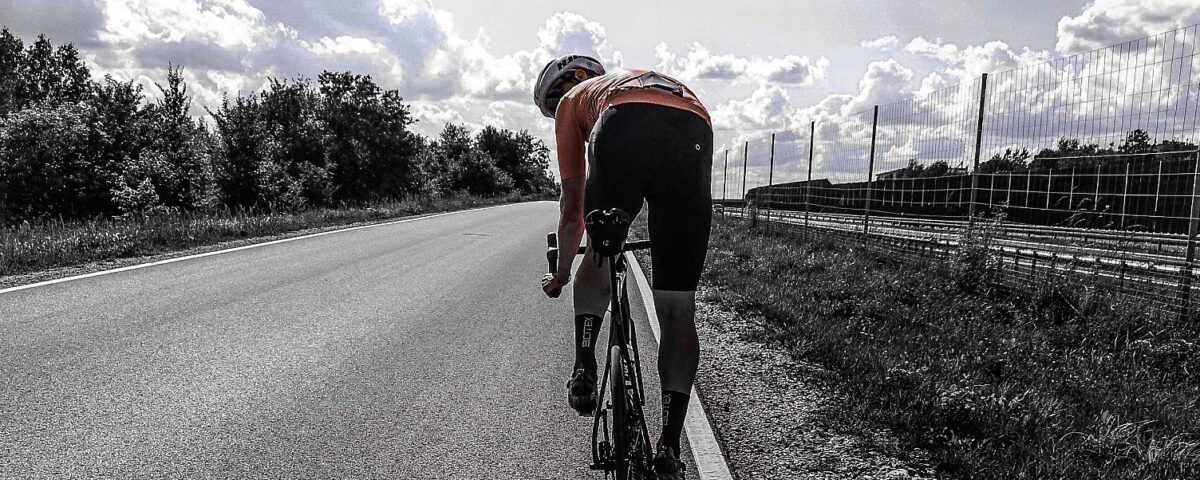
Which model is best for you: polarized, block, classical, or perhaps reverse periodization? In the cycling world, whether at the amateur or professional level, there has long been debate about the effectiveness of various approaches to training. Each method has its strengths, but selecting the right one requires accounting for individual needs, goals, and training conditions.
Understanding the unique assumptions behind each model is the first step to using them effectively. Studies and athlete experiences show that tailoring a training strategy to your needs can be the key to achieving better results. So, what should you know before committing to a specific method?
What will you find in this article?
- Training models in sports
- The classical model
- The polarized model
- The block model
- The reverse model
- How to choose the best training model in cycling?
- Summary – the best training models
Training models in sports
Different training models have been developed to meet athletes’ diverse needs. Each model is designed to achieve specific goals, fit available time, and align with the athlete’s skill level. Research from the University of Colorado shows that the effectiveness of a particular approach depends on the athlete’s individual characteristics and lifestyle.
What influences the choice of training model?
- Skill level:
- Beginners focus on steady development and building an endurance base.
- More experienced athletes need training tailored to the specific demands of their events.
- Time availability:
- Some models, like the polarized model, require long training sessions.
- Others, like the block model, can be implemented with less time while maintaining high efficiency.
- Sporting goals:
- Preparing for short time trials requires a different approach than training for ultramarathons.
- The plan must address the discipline’s specifics and the key abilities to develop.
- Individual response:
- Some cyclists thrive on high-volume training, while others benefit more from intense sessions.
- Regular monitoring helps adapt the training model to the athlete’s needs.
The best training models: the classical model – the foundation of cycling training
The classical model, also known as the traditional or pyramid model, is one of the oldest and most proven approaches in cycling training. It emphasizes systematically building fitness through gradually increasing training intensity. Its effectiveness has been validated over decades, both among amateurs and professionals.
How does the classical model work?
- Dominance of low-intensity training:
- Most sessions occur in zones 1–2 (55–75% FTP).
- Goal: Develop aerobic endurance and optimize fat utilization as an energy source.
- During these long, steady rides, the body enhances its ability to transport oxygen by expanding the network of capillaries in the muscles.
- Moderate intensity for key adaptations:
- Training in zones 3–4 (76–95% FTP) constitutes a smaller portion of the program but is crucial for improving threshold power and overall endurance.
- These sessions are usually structured as threshold intervals, which train the body to sustain high effort for extended periods—an essential skill for racing.
- Limited high-intensity training:
- Sessions in zones 5–6 (above 96% FTP) are the shortest but have the most significant impact on maximum power development and lactate tolerance.
- These workouts prepare a cyclist for intense surges, finishing sprints, or race-winning accelerations.
Why does the classical model work?
Its effectiveness comes from its focus on physiological fundamentals. Gradually increasing intensity allows the body to adapt to training loads without excessive fatigue. The high volume of aerobic training provides a strong foundation, which can later support the development of more advanced abilities, such as threshold power or anaerobic endurance.
The classical model is particularly effective for cyclists who can dedicate more time to consistent, long rides. It is also an excellent choice for beginners, who benefit from a stable and predictable method of improving fitness.
Sample classical training plan
Level: Advanced amateur
Volume: 12–14 hours weekly
| Day | Type | Duration | Intensity | Terrain | Goal |
|---|---|---|---|---|---|
| Monday | Active Recovery | 60 min | Zone 1 (55–65% FTP) | Flat terrain, very light pedaling | Speed up recovery after the weekend |
| Tuesday | Threshold Training | 120 min | – Warm-up: 20 min in Zone 1–2 – Main: 3 x 15 min @ 90–95% FTP – Rest between sets: 8 min in Zone 2 – Cool-down: 15 min in Zone 1 | – | Develop threshold power |
| Wednesday | Endurance Training | 180 min | Zone 2 (65–75% FTP) | Varied terrain, possible natural accelerations on climbs | Build base endurance |
| Thursday | Interval Training | 120 min | – Warm-up: 20 min in Zone 1–2 – Main: 6 x 3 min @ 105–110% FTP – Rest between sets: 3 min in Zone 1 – Cool-down: 15 min in Zone 1 | – | Develop power and lactate tolerance |
| Friday | Recovery or Rest | – | Zone 1 or rest Optional: 60 min very easy ride | – | Rest before the weekend |
| Saturday | Long Endurance Ride | 240 min | Zone 2 with natural accelerations | Varied terrain, possible longer climbs | Develop endurance and ride economy |
| Sunday | Group Ride or Mixed Training | 180 min | Variable (Zones 1–5) | Natural accelerations and sprints | Improve tactical skills and adaptation to variable efforts |
The best training models: the polarized model – a revolutionary approach to endurance training
The polarized model introduces a revolutionary split in training intensity: most time is spent at very low intensities, while the remainder focuses on extremely high-intensity sessions, minimizing “middle-zone” training.
How does the polarized model work?
- Low-intensity training (80% of the time)
- The majority of training sessions occur below 75% FTP, within aerobic zones.
- These easy rides are crucial for metabolic adaptations – they help develop a network of capillaries in the muscles and train the body to use fat more efficiently as an energy source.
- Due to the low intensity, the nervous system has time to recover, allowing for greater efficiency in high-intensity sessions.
- High-intensity training (20% of the time)
- These sessions take place in zones 5–6, above 106% FTP.
- Short, highly intense intervals maximize maximum power output and improve the body’s ability to tolerate high levels of lactate.
- These workouts are very demanding but provide exceptional adaptive stimuli, leading to significant performance gains.
Why is the polarized model so effective?
Research from the Norwegian University of Science and Technology has demonstrated that polarized training leads to highly efficient mitochondrial adaptations—a key factor in energy production at the cellular level.
- Low-intensity training: increases the number of mitochondria and enhances their efficiency in aerobic energy processes.
- High-intensity training: improves mitochondrial function under high-energy demand conditions, making energy production more effective at higher intensities.
Additionally, the polarized model positively impacts glycogen management. Regular low-intensity rides train the body to preserve glycogen stores by utilizing fat more efficiently as fuel. This means that during intense races or demanding training sessions, a cyclist has more readily available energy reserves, improving endurance and delaying fatigue.
Who should use the polarized model?
The polarized training model is especially recommended for cyclists who have ample time for training but want to optimize their efforts. Due to its clear separation of intensity levels, it provides significant benefits for both aerobic endurance and anaerobic power.
If implemented correctly, this model can boost long-distance efficiency while simultaneously enhancing a cyclist’s ability to execute dynamic accelerations during critical race moments.
Sample polarized training plan
Level: Advanced Amateur
Volume: 13–15 hours weekly
| Day | Type | Duration | Intensity | Terrain | Goal |
|---|---|---|---|---|---|
| Monday | Active Recovery | 60 min | Strictly Zone 1 (<65% FTP) | Flat terrain | Full recovery, light movement |
| Tuesday | High-Intensity Intervals | 120 min | – Warm-up: 30 min in Zone 1 – Main: 8 x 4 min @ 115% FTP – Rest between sets: 4 min in Zone 1 – Cool-down: 20 min in Zone 1 | – | Develop maximum power |
| Wednesday | Long Low-Intensity Training | 240 min | Strictly Zone 1–2 (<75% FTP) | Varied terrain, maintaining low heart rate even on climbs | Improve fat metabolism |
| Thursday | Sprint Training | 150 min | – Warm-up: 30 min in Zone 1 – Main: 12 x 30 sec all-out sprint – Rest between sprints: 4.5 min in Zone 1 – Cool-down: 20 min in Zone 1 | – | Develop maximum power and speed |
| Friday | Low-Intensity Training | 180 min | Zone 1–2 | Flat terrain | Active recovery and endurance development |
| Saturday | Very Long Low-Intensity Training | 300 min | Strictly Zone 1–2 | Varied terrain, maintaining low intensity throughout | Maximize aerobic endurance development |
| Sunday | Recovery Ride with Short Accelerations | 120 min | Zone 1 [4–6 short (15s) accelerations] | – | Maintain speed while keeping fatigue low |
The best training models: the block model – focusing on key abilities
The block training model is an approach that allows athletes to focus on developing specific abilities during short, intense training periods. This method gained popularity thanks to research from the Eastern European Sports Institute and is particularly valued among professional cyclists who prepare for key races during the season.
How does the block training model work?
The essence of this approach is dividing the training cycle into three main phases, each with a precisely defined goal and unique characteristics.
Accumulation block:
- Duration: 2–6 weeks
- Goal: Build an endurance foundation.
- Characteristics: High-volume, low-intensity training focused on aerobic capacity development.
- Typical sessions: Long rides in Zones 1–2 (55–75% FTP).
- During this phase, the body adapts to increased training loads, allowing the cyclist to build a solid foundation for more demanding workouts in the later stages.
Transmutation block:
- Duration: 1–2 weeks
- Goal: Develop cycling-specific abilities such as threshold power.
- Characteristics: Medium-volume training with high intensity, including threshold intervals and workouts above the lactate threshold.
- Typical sessions: Intervals in Zones 3–4 (85–105% FTP).
- During this phase, the body adapts to more intense efforts, leading to metabolic improvements and better energy efficiency.
Realization block (peak form):
- Duration: 1 week
- Goal: Maximize peak form for competition.
- Characteristics: Significantly reduced volume but maintaining high intensity.
- Typical sessions: Short, high-intensity workouts in Zones 5–6 (above 106% FTP).
- This stage “sharpens” the cyclist’s abilities, ensuring they reach peak performance for key races.
Why choose the block training model?
The block model is unique in its concentrated approach to training adaptations. Instead of trying to improve multiple abilities simultaneously, each phase focuses on one key aspect, making the training highly efficient.
This model is particularly useful for cyclists with limited preparation time, as it maximizes each training session’s effectiveness. However, it requires careful planning and proper recovery management to avoid overtraining.
Sample block training plan
Block: Threshold training
Volume: 10–12 hours per week
| Day | Type | Duration | Intensity | Form | Goal |
|---|---|---|---|---|---|
| Monday | Recovery or rest (Optional: 45 min very light ride) | – | Zone 1 | – | Full recovery before an intense training block |
| Tuesday | Threshold Training | 120 min | – Warm-up: 20 min in Zone 1–2 – Main set: 4 × 12 min @ 95–100% FTP – Recovery: 6 min in Zone 1 – Cool-down: 15 min in Zone 1 | – | Develop threshold power |
| Wednesday | Sweet Spot Training | 150 min | – Warm-up: 20 min in Zone 1–2 – Main set: 3 × 20 min @ 88–93% FTP – Recovery: 10 min in Zone 1 | – | Develop sustained endurance at near-threshold power |
| Thursday | Active Recovery | 60 min | Zone 1 | – | Recovery between high-intensity sessions |
| Friday | Threshold Training + Short Accelerations | 120 min | – Warm-up: 20 min in Zone 1–2 – Main set: 3 × (15 min @ 95% FTP + 3 × 30s accelerations @ max effort) – Recovery: 8 min between sets | – | Develop power and ability to tolerate variable efforts |
| Saturday | Long Endurance Ride with Intervals | 180 min | – Zone 2 throughout the session – 2 × 30 min @ 88–92% FTP in the second half of the ride | – | Develop sustained endurance at a high effort |
| Sunday | Recovery or rest (Optional: 60 min very light ride) | – | Zone 1 | – | Recovery before the next training week |
The best training models: reverse periodization – a new approach to training cycles
The reverse periodization model is a fresh take on training planning that is gaining popularity, especially among amateur cyclists. It works particularly well when winter conditions and indoor training make it difficult to perform long, steady rides. The key feature of this model is that it reverses traditional periodization – starting with high-intensity and power development, followed by endurance training later.
How does the reverse periodization model work?
Intensity phase (4–6 weeks):
- Goal: Develop anaerobic abilities and maximum power.
- Characteristics: Short, very high-intensity sessions lasting 60–90 minutes, with maximal efforts.
- Typical sessions: Intervals in Zones 5–6 (above 106% FTP), e.g., 8 × 30 sec all-out sprints with longer rest periods.
Threshold endurance phase (3–4 weeks):
- Goal: Improve threshold power and the ability to sustain high-intensity efforts.
- Characteristics: Longer moderate-intensity workouts, focusing on lactate threshold adaptation.
- Typical sessions: Intervals in Zones 3–4 (85–95% FTP), e.g., 4 × 10 min at threshold with short recovery.
Volume phase (4–6 weeks):
- Goal: Stabilize training adaptations and build aerobic endurance.
- Characteristics: Long, steady rides in Zones 1–2 (55–75% FTP).
- Typical sessions: 3–5 hour rides at low intensity.
Why does the reverse periodization model work?
Starting training with short, intense sessions aligns well with time constraints during winter months. This approach offers several key benefits:
- Optimized hormonal response: High-intensity training stimulates anabolic hormone production (e.g., testosterone), aiding muscle adaptation and recovery.
- Better cortisol regulation: Reduced stress hormone levels in later phases allow for faster recovery and better training efficiency.
- Time efficiency: Early phases require less time, making it ideal for cyclists with limited weekly training hours.
Who is reverse periodization best for?
This model is particularly suited for experienced cyclists who want to optimize training with limited time (5–8 hours per week). It is also useful for riders preparing for shorter races, where power and recovery between efforts are key.
Sample reverse periodization training plan
First 4–6 Weeks
Volume: 5–8 hours per week
| Day | Type | Duration | Intensity | Form | Goal |
|---|---|---|---|---|---|
| Monday | Active Recovery | 45 min | – Zone 1 – Possible 2–3 short accelerations | – | Maintain activity at low fatigue levels |
| Tuesday | Sprint Training | 90 min | – Warm-up: 20 min in Zone 1–2 – Main set: 10 × 30 sec all-out sprints – Recovery: 4.5 min between sprints – Cool-down: 15 min | – | Develop maximum power output |
| Wednesday | High-Intensity Intervals | 120 min | – Warm-up: 20 min – Main set: 15 × 1 min @ 120% FTP – Recovery: 2 min in Zone 1 | – | Develop power and lactate tolerance |
| Thursday | Active Recovery | 60 min | – Zone 1 – 2–3 short accelerations | – | Recovery between high-intensity sessions |
| Friday | Power Training | 90 min | – Warm-up: 20 min – Main set: 8 × 2 min @ 115% FTP – Recovery: 3 min in Zone 1 | – | Develop high power output |
| Saturday | Variable-Intensity Training | 150 min | – Zone 2 – 3–5 intense climbs (6–10 min each) – Recovery: descents and flat terrain | – | Develop power in real-world terrain conditions |
| Sunday | Recovery Ride | 60 min | – Zone 1–2 – Possible 2–3 short accelerations | – | Active recovery before the next training week |
How to choose the best training model in cycling?
Choosing the right training model depends on factors such as skill level, goals, and available time.
| Level | Best Model | Why? |
|---|---|---|
| Beginner Cyclist | Classical Model | Systematic base building and technique development are critical. |
| Intermediate Cyclist | Polarized or Block Model | These methods suit athletes with solid endurance who can handle varied or intensive training. |
| Advanced Cyclist | Reverse or Mixed Model | These approaches offer flexibility and optimize peak performance for selected events. |
Summary – the best training models
Choosing the right training model is an important step, but even more crucial is its consistent execution. The key to success in cycling lies not only in well-structured training organization but also in understanding your body’s physiology and the ability to adapt flexibly to changes.
Remember these three key points!
- Gradual Progression: Start with simpler models to build a foundation, then move to advanced methods.
- Monitoring: Regularly analyze progress and adjust as needed.
- Flexibility: Adapt the model to changing goals, life circumstances, or skill levels.
By understanding your physiology and staying consistent, training becomes both effective and enjoyable, leading to long-term progress.
Thinking about cycling training? If you want to take your riding to the next level, we have a great option for you:
- Individual coaching – work one-on-one with an experienced coach who will continuously adjust your training load to your needs and support your development as a cyclist.
